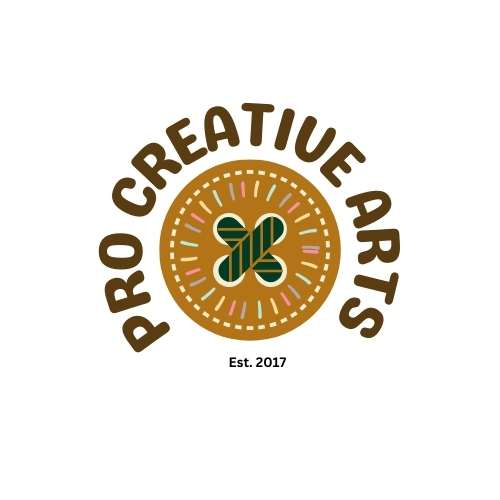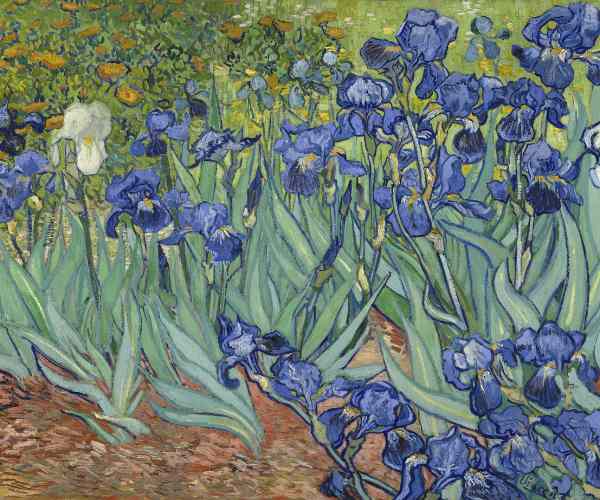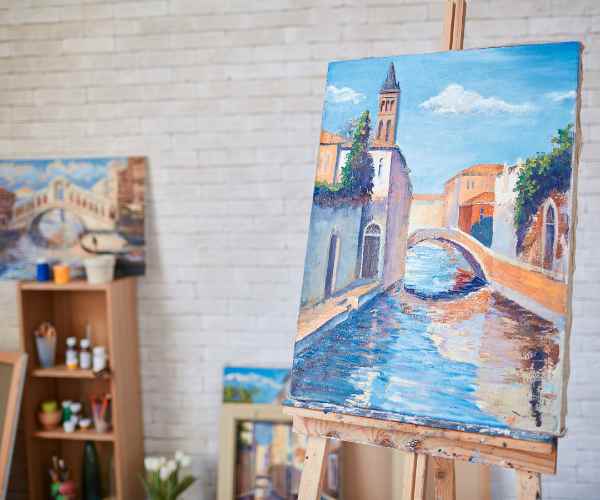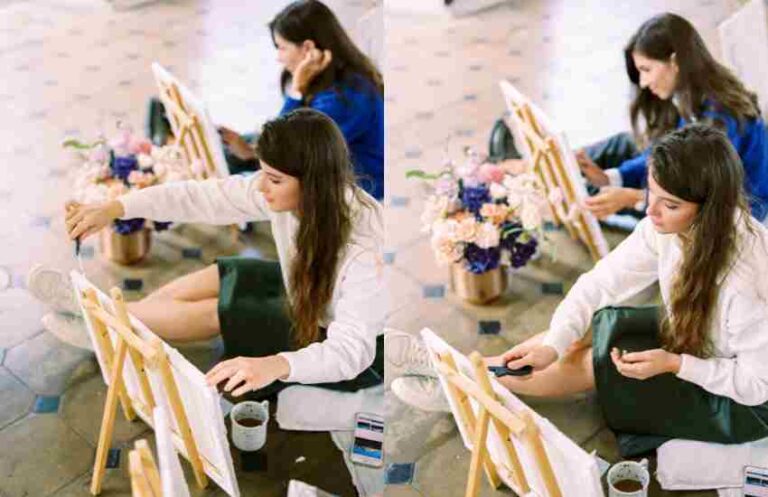Modern technology used in art education greatly changes how students c, or how art is taught in schools. Traditional art education methods which put more focus on hands-on practice and creating art using different mediums are being altered with the incorporation of digital devices and technology. This change is very critical in closing the gap in the old ways of doing things and the new ways of doing things.
The new curriculum and tools are crucial in the integration of the new education developments. They provide students with new experiences, new more complex and advanced mediums as well as artistic processes. This post examines more the impact that these tools have on art classrooms and how it affects the future of art education.
Developmental History of Modern Education Technology in Art
Most traditional methods of art education incorporated physical media with hands-on practices. Students made use of newspapers, paints, pencils, and clay as tools during sessions in an attempt to develop skills in artistic expression and articulation through the use of their hands. These methods enhanced the students’ artistic skills and even understanding of the different artistic techniques.
The shift from traditional methods to digital methods further illustrates the changing times. With the introduction of software related to art, AR and VR, the concept of integrating technology into education is being taken. This transition is not simply an extension of new features, it is a radical transformation of how art is taught and experienced by students.
For example, there are digital art tools that allow students to create art or edit using the same methods that material art once used, which was previously not possible with raw art tools. In addition, VR provides the students with an engaging and stimulating experience while AR provides students with additional context which helps them learn better.
Significant Changes
There have been notable changes in the past which have had an effect on technological integration of modern day art education:
- Digital Art Tools: Adobe’s Creative Cloud and Procreate are some of the more popular digital tools used today by students that shape their experience. Such platforms provide tools needed for drawing, painting and graphic designing. Cengage’s 2023 report states that 75% of art teachers use some form of digital software, as it provokes interest and student development.
- Virtual Reality (VR): VR technology enables students to traverse through artistic spaces and interact with a detailed digital interface. Tilt Brush and Oculus Medium, for instance, allow students to immerse themselves into virtual three dimensional art and manipulate concepts outside of the real world. In a paper published by the Journal of Art Education in 2022, it was found that compared to the conventional approach, the use of VR in art education boosted student creativity by approximately 40 percent.
- Augmented Reality (AR): AR technologies allow for the projection of virtual game components on top of the physical world, offering more captivating ways of acquiring artistic knowledge. AR applications like Artivive – students are able to view more complex details and animations on top of existing physical artworks thereby gaining more context about the piece.
Additionally, Google’s Creative Cloud is another tool that has exemplified how education in digital art has transformed. For art classes in the modern world, It equipped classrooms with networking capabilities, resource libraries, and the ability to co-create.
Upgrading Syllabuses Of Modern Art Education
Embracing technology of modern art education greatly exemplifies the use of digital tools in the the area of art education. The tools not only develop creativity but are also integral in offering students the space to develop critical thinking and enhanced problem solving abilities.
Digital Art Software: Soft wares like Adobe Photoshop, Illustrator, and Corel Painter offer students an opportunity to engage with different artistic approaches and produce high-quality digital art. A CDW poll in 2023 found out that 68% of instructors who teach art suggested that using digital art tools helps achieve better results for students.
Virtual Reality: VR tools give users the opportunity to feel fully immersed in the reality and that greatly improves the creative process. For example, students who use virtual reality to visit art galleries or build sculptures in virtual reality can acquire new insights which can be very useful when the time comes to develop art.
These tools can be implemented into the syllabus and aid a student in how to interact with art, build skills or how to hone in on their imagination.
Curricular Development
Fifty years after the first symposium on new technologies in art education, expansive new pedagogical techniques, such as distanced learning modules, began to penetrate into art higher schools, which included areas such as media and modern techniques, including history and philosophy of art.
- Media and new technologies: New ages mean new things such as social media which took the world by storm, however, modern lessons started to comprise entire blocks on digital media construction, endorsing children in using computer programs and applications properly. In a report from September 2024 by Google Scholar, schools who began to use digital media modules endorsed their students to engage actively in lessons by over 30%.
- Artistic Techniques: The newest educational policy framework seeks to integrate world art practices and their execution in computer-based as well as real-life mediums which duly allows students of art to possess a holistic understanding of both the old as well as new perspectives.
- Art History: Updated curriculums make use of modern resources to teach history of art, making the shaping of historical and modern art movements more interactive and alluring.
One of the best case examples of these substantial reforms is that of the Fawn Creek school district. The school district improved its programs of arts education by incorporating modern means into the curriculum which has resulted in the students becoming more engaged and learning performance increasing. Their review in 2023 found that the use of digital art tools, case studies, and interactive technology contributes to an improvement of the students’ artistic skills and critical thinking.
Emerging Technologies in Art Education
Fundamental art education software is critical in the advancement of art education, which has a high dependency on the use of online mediums for teaching artistic techniques and encouraging critical thinking.
Google Scholar Tools: Google Scholar provides resources such as academic articles, peer-reviewed journals, and other useful scholarly information that can further advance art education. These resources can enable educators to become more fluent with the modern trends and theories in the art world.
Digital Art Platforms: Mention of Procreate, Corel Painter, and Adobe Creative Cloud was utterly impossible for someone looking to learn about digital art. These tools help students try out various techniques and produce work of professional quality. As an example, Adobe Illustrator allows students to gain basic knowledge about vector graphics and design concepts, while Procreate provides basic drawing tools which are simple and easy to work with for novice as well as experienced painters.
A study performed by CDW in 2023 suggests that some educators of art (72%) classes reported that their students’ engagement as well as performance improved while ensuring that digital artistic tools are used during lessons. Such tools help teachers by providing them with the necessary tools to facilitate the engagement with the creative process with a variety of resources. For instance, the interface of Procreate is quick to learn and so students can pick up the technique of digital art quite well, whereas the platforms in Adobe Creative Cloud are well suited for people that would want to go through tutorials and support materials.
Interactive and immersive technologies
VR and AR are having a positive impact in the art classrooms, these technologies allow students to engage with the concepts of art in more interactive ways, which further helps them in better understanding the concepts.
Virtual Reality : Technologies like Tilt Brush and Oculus Medium are excellent additions to the student learning experience as they allow for the student to not only create 3D art but also participate in virtual galleries. as for Tilt Brush, It allows the students to guide their imagination with paint in a 3D space adding a whole new facet on the creative process. However, the use of virtual reality in art education increased overall student engagement as per a study done by Journal Of Art Education by 35% as well as allowing for the students to expand their understanding of the techniques required to master the art thru a 2022 study.
Augmented Reality : Artivive and other AR applications supplement real works of art by adding a layer of interactivity and in turn helping students better understand the art, for example, Artivive helps students see added information along with animations over their physical art turning context and imagination into a masterpiece.
Interactive technologies take education up a notch allowing students to motivate themselves and work on their creative process allowing for a deeper understanding of the subject at hand. Schools that have made usage of such technology have also noted a significant increase in satisfaction among its student base.
Real-world Illustrations and Case Studies
For instance, the purpose of art education technology at the New York City’s School of Arts is to encourage creative thinkers to think out of the box and express themselves artistically. Such institutions equip students with digital technologies and tools as well as interaction aids in order to revolutionize their learning processes, particularly in teaching art.
Such initiatives, as well as the use of a variety of employed devices, including VR and AR technologies at the New York City’s School of Arts, are part of contemporary approaches to art education. According to art educators who were interviewed, these technologies have enabled a shift in their teaching practices and stimulated students’ interest in their subjects. When asked about the students’ use of digital technologies in their lessons, the educators noted an increased engagement on students’ behalf of about 40% in relation to art projects.
Take Away Messages
The integration of up to date art education technologies comes with its very own challenges which includes the transition and incorporation of technological tools into students’ daily sessions. Achieving such a success requires greater effort in relation to development of the professional growth of teachers as well as setting up feedback mechanisms.
Development in Technological Tools: It is important for teachers not only grasp the use of new tools but also integrate them into the curricula. Teacher training courses, seminars, and regular workshops should equip teachers with knowledge of how to improve their use of technology.
Access to Digital Tools: It is vital that students have access to the needed digital tools if they are to compete on an equal basis in art education. Schools must dedicate resources to the acquisition of technology and also assist students in using the tools.
FAQs
What Are the Advantages of Technology in Art Education?
There are several benefits that come with incorporating technology in art education:
Greater Creativity: With the advanced instruments and platforms that students are provided with, the boundaries of their creativity are stretched out. For instance, digital art software such as Procreate and Adobe Photoshop allows students to go beyond what they can create using traditional forms of art as it exposes them to various different styles and techniques.
Opportunity for Broad Ranging Digital Tools: New era art educational technologies come built with a whole different range of digital tools. Google Creative Cloud is one of the platforms that gives students easy access to professional software and resources. Research conducted by CDW in 2023 indicated that 78% of the teachers surveyed said that digital technologies improved students’ artistic skills, and revealed more possibility for creative practice.
Increasing the Interest of Students in the Creativity Process: Traditional elements of the creativity process will be enhanced and include more interactivity by the use of technology. For instance, VR applications such as Tilt Brush allow students to design in 3D in virtual space which presents a new way for them to experience and explore art.
How can educators accommodate the curriculum changes?
To be able to accommodate the updated curriculum and ensure it is comprehensive, educators must employ teaching methods outlined in the next sections.
- Integrating Digital Art Tools: Once the modern curriculum is developed, it is necessary to begin incorporating assistive technology in the lesson plans. For example, students can utilize Corel Painter and Adobe Illustrator to get some insight on how to go about digital artistic tools.
- Participating in Professional Development: To be part of the current art education technologies, it means that an educator is required to keep up to date with current changes on teaching strategies, and the only way to do so is to participate in professional development. Such resources include Workshops and training sessions which online in nature, can assist in accomplishing this as guided content is made available.
- Using Virtual Classrooms: During periods of lockdown, almost every instructor was able to adapt to using a virtual classroom providing users with art education materials. Remote-learning was synthesized with the use of applications such as Google Classroom and Microsoft Teams which made the entire experience of learning, interactive.
What Are the Best Tools for Modern Art Education?
Here are a few modern tools that have a tendency of taking the center stage during art education:
- Google’s Creative Cloud: Useful in completing primary tasks such as the teaching of basis of Art and Design and the introduction of software programs such as photoshop, jaype, illustrator, and many more conducting.
- Digital Media Applications: Procreate or ArtRage are digital mediums of art that allow the user to depict and create ore cohesive designs giving even beginners and students within varying skill sets the ability to produce stunning artwork.
- Interactive Technologies: Tools such as the Oculus Rift truly allow for a new way of experiencing art, and Interpretive rose AR applications like Artivive serves to both deepen the understanding and facilitate development of the artistic vision.
What is the impact of technology on students’ creativity and their engagement?
There are quite a number of technologies that have a positive impact on students´ creativity and their engagement with the following some great examples as follows
- Diverse Resources: The influence of this is fostering creativity with the help of many tools and resources in a single classroom. For instance, the incorporation of online art statisticians offers a range of features to students to experiment with unknown artistic styles and concepts.
- More Modes of Artistic Expression: It can be observed that technology allows students to unleash a variety of creative expression. With Virtual Reality and Augmented Reality, for example, students are able to view their artwork in art that could not be done using other forms of media.
- Increased Rates of Active Participation: Implements that are creative can make the art class more interesting and help the growth of students’ interest. According to a research published in a journal of Educational technology in 2023, art education combined with digital tools increased the students’ engagement and participation by 45%.
Final thoughts
The incorporation of technology into the modern art education has revolutionized the art classrooms. Adopting these modern technologies can create a more engaging and efficient experience within the arts. Art instructors should consider utilizing new technologies in order to boost student`s imagination and creativity while priming them for a more progressive art environment.
More Post
- Preserving Digital Art: Archiving Strategies and Methods
- Introductory Dive: Modern Art Movements for Beginners
- Influential Artists Driving Current Art Movements: Shaping the Future of Creativity
- Tech Impact on Contemporary Art Trends: Exploring Effects
- Comparative Analysis: 20th vs 21st Century Art Movements



